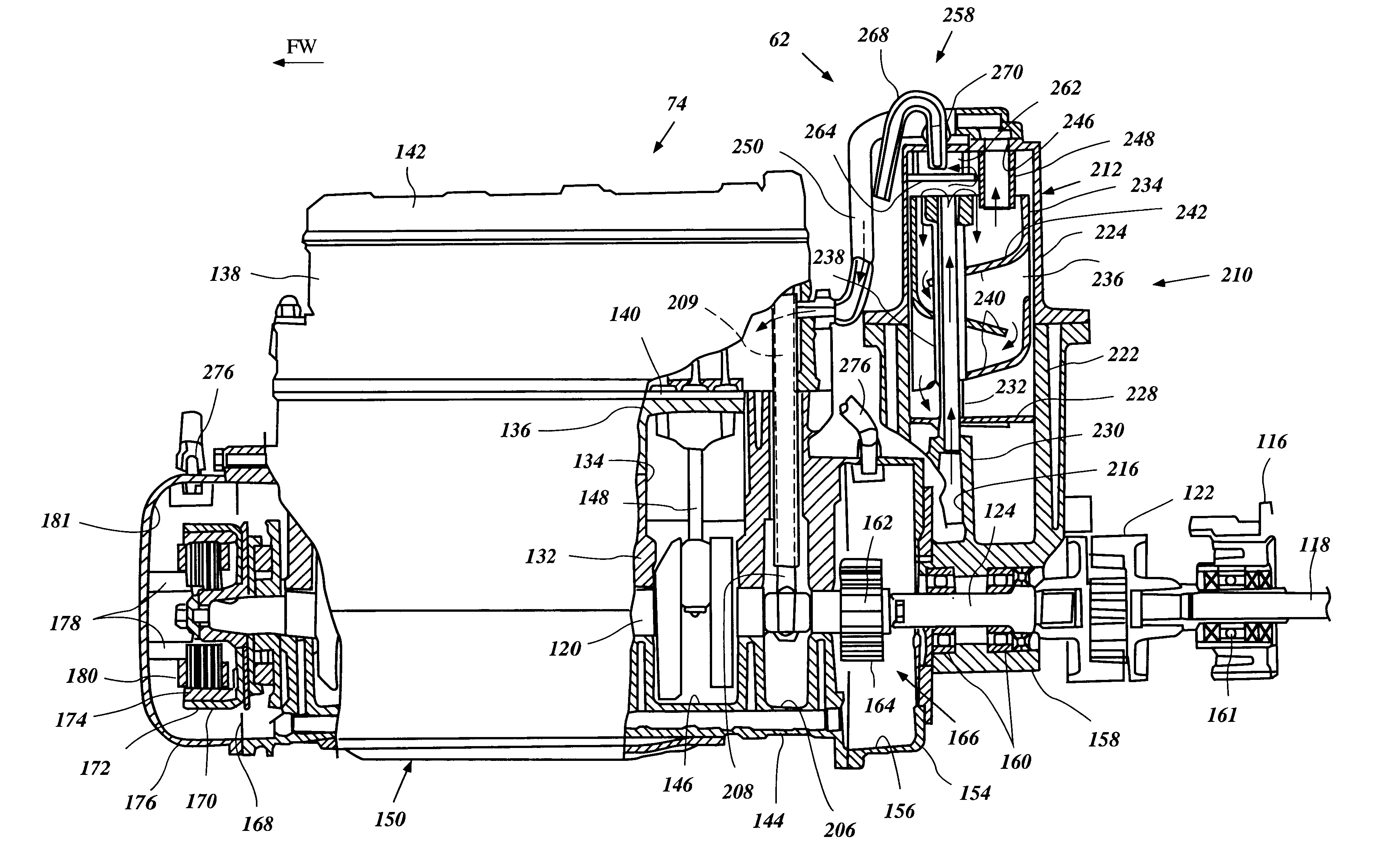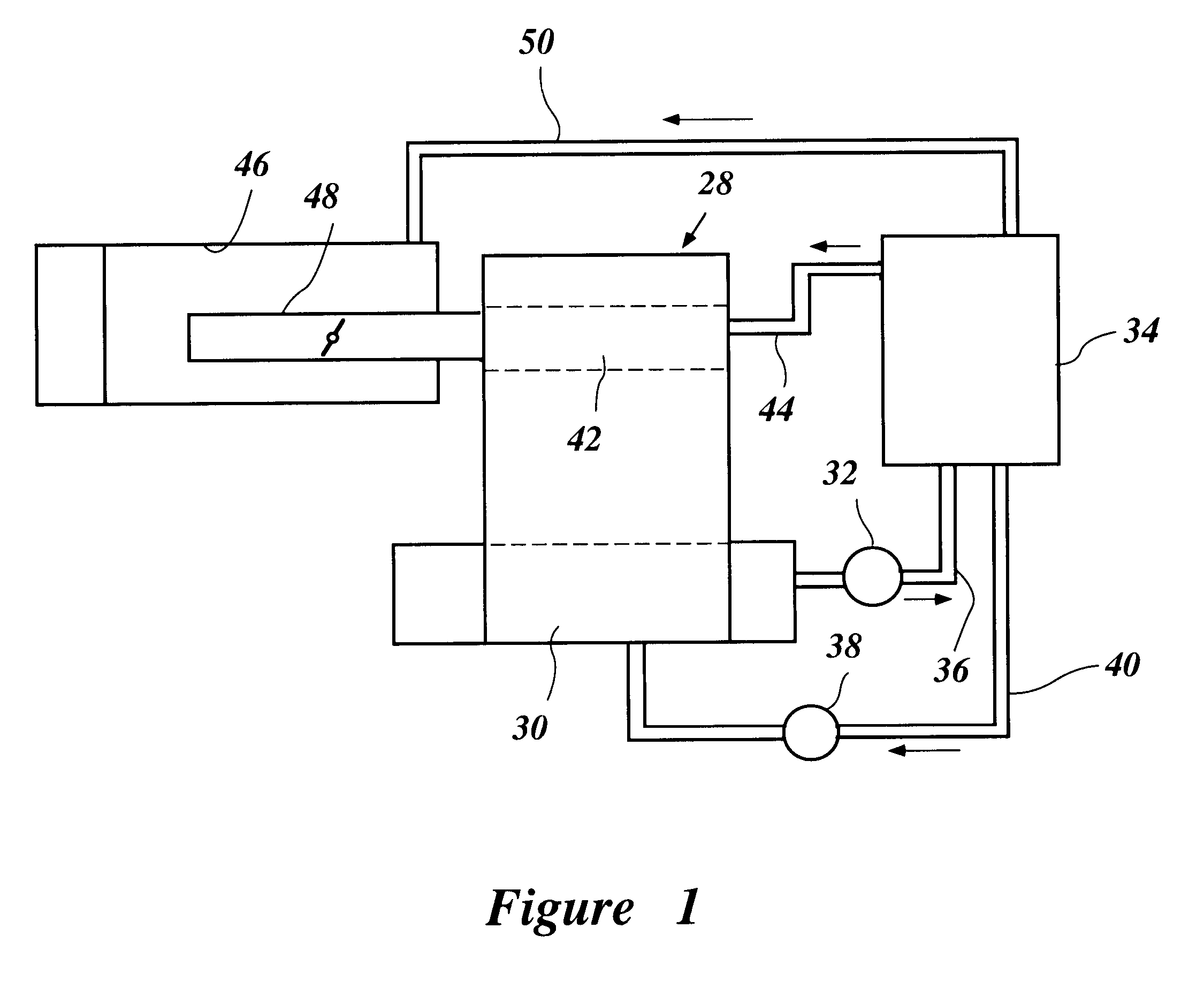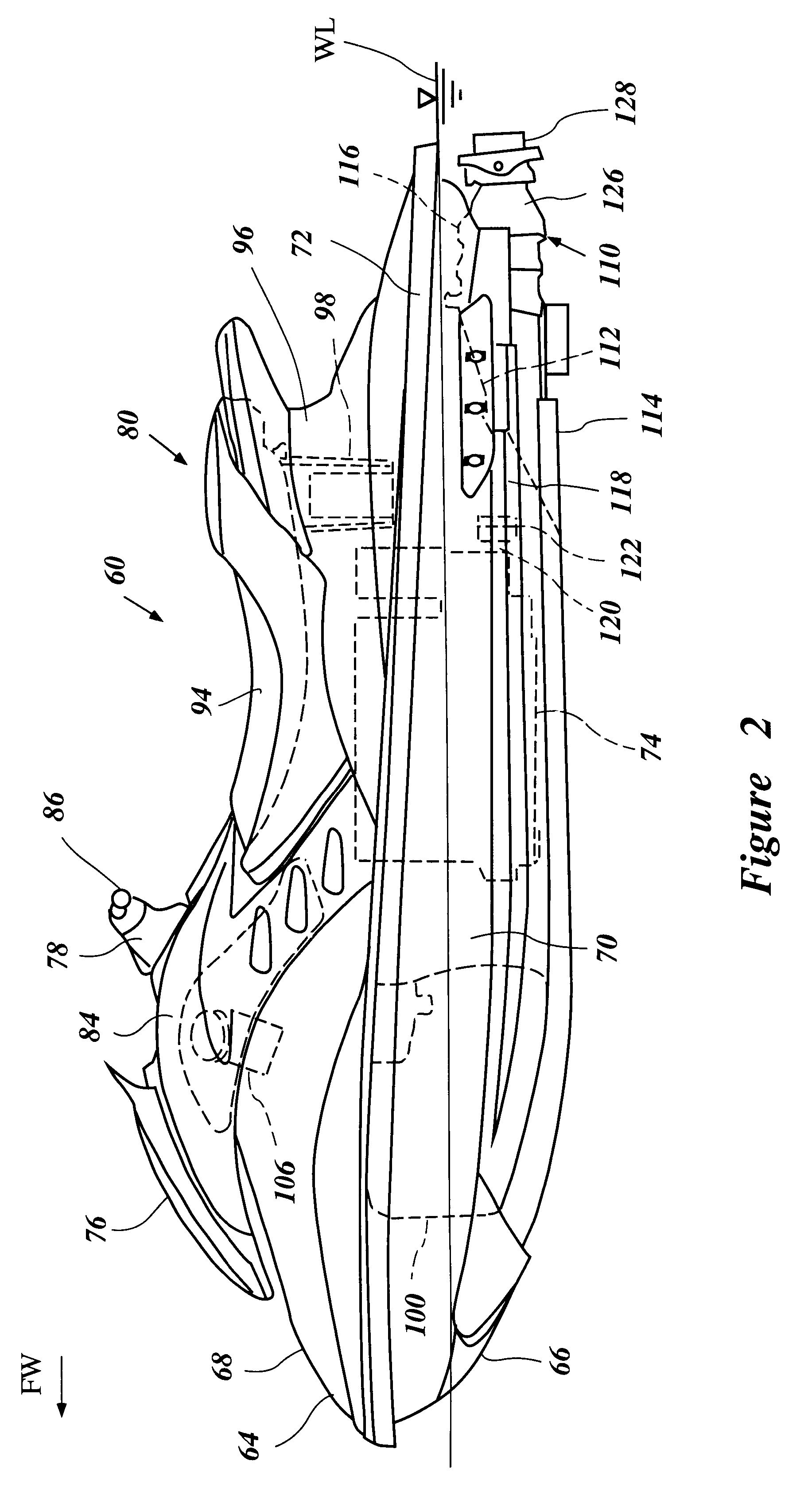Ventilation system for watercraft engine
a technology for watercraft engines and ventilation systems, which is applied in the direction of steam power plants, special-purpose vessels, vessel construction, etc., can solve the problems of increasing the weight of the engine, increasing the emissions of the engine, and producing large amounts of carbon monoxide and hydrocarbons
- Summary
- Abstract
- Description
- Claims
- Application Information
AI Technical Summary
Benefits of technology
Problems solved by technology
Method used
Image
Examples
first embodiment
With reference to FIGS. 5 and 6, the combined lubrication and ventilation system 62 will now be described below.
The engine 74 preferably employs a lubrication system that delivers lubricant oil to engine portions that need lubrication for inhibiting frictional wear of such portions. A closed-loop type, dry-sump lubrication system 210 preferably is applied in this embodiment. The lubrication system 210 comprises a lubricant oil tank assembly or oil container 212, a feed passage 214, a scavenge passage 216, a feed pump 218 and a scavenge pump 220.
The oil tank assembly 212 stores lubricant oil for lubricating the engine 74. The oil tank assembly 212 comprises a lower tank body 222 unitarily formed with the intermediate shaft and pump housing 158 and is located thereabove in a rear area of the engine body 150. An upper tank body 224 is affixed to an upper portion of the lower tank body 222. The feed passage 214 couples the oil tank assembly 212 with internal delivery passages or "oil ga...
third embodiment
FIG. 12 illustrates yet another modification of the combined lubrication and ventilation system 62 illustrated in FIG. 6. In this arrangement, the ventilation passage 268 extends from the cylinder head cover member 142 where the ventilation chamber 262 is located similarly to the arrangement shown in FIG. 9. The same check valve 300 used for the third embodiment and is shown in FIG. 11 also is applied for this embodiment and is disposed within the ventilation passage 268.
FIG. 13 illustrates yet another modification of the combined lubrication and ventilation system 62 illustrated in FIG. 6. In this arrangement, a first ventilation chamber 262a is disposed atop of the oil tank assembly 212, while a second ventilation chamber 262b is disposed separately either from the oil tank assembly 212 or the cylinder head cover member 142. Both the first and second ventilation chambers 262a, 262b form labyrinth paths therein. The ventilation passage 268 comprises an upstream portion 268a that co...
PUM
 Login to View More
Login to View More Abstract
Description
Claims
Application Information
 Login to View More
Login to View More - R&D
- Intellectual Property
- Life Sciences
- Materials
- Tech Scout
- Unparalleled Data Quality
- Higher Quality Content
- 60% Fewer Hallucinations
Browse by: Latest US Patents, China's latest patents, Technical Efficacy Thesaurus, Application Domain, Technology Topic, Popular Technical Reports.
© 2025 PatSnap. All rights reserved.Legal|Privacy policy|Modern Slavery Act Transparency Statement|Sitemap|About US| Contact US: help@patsnap.com



